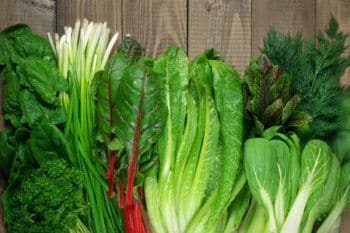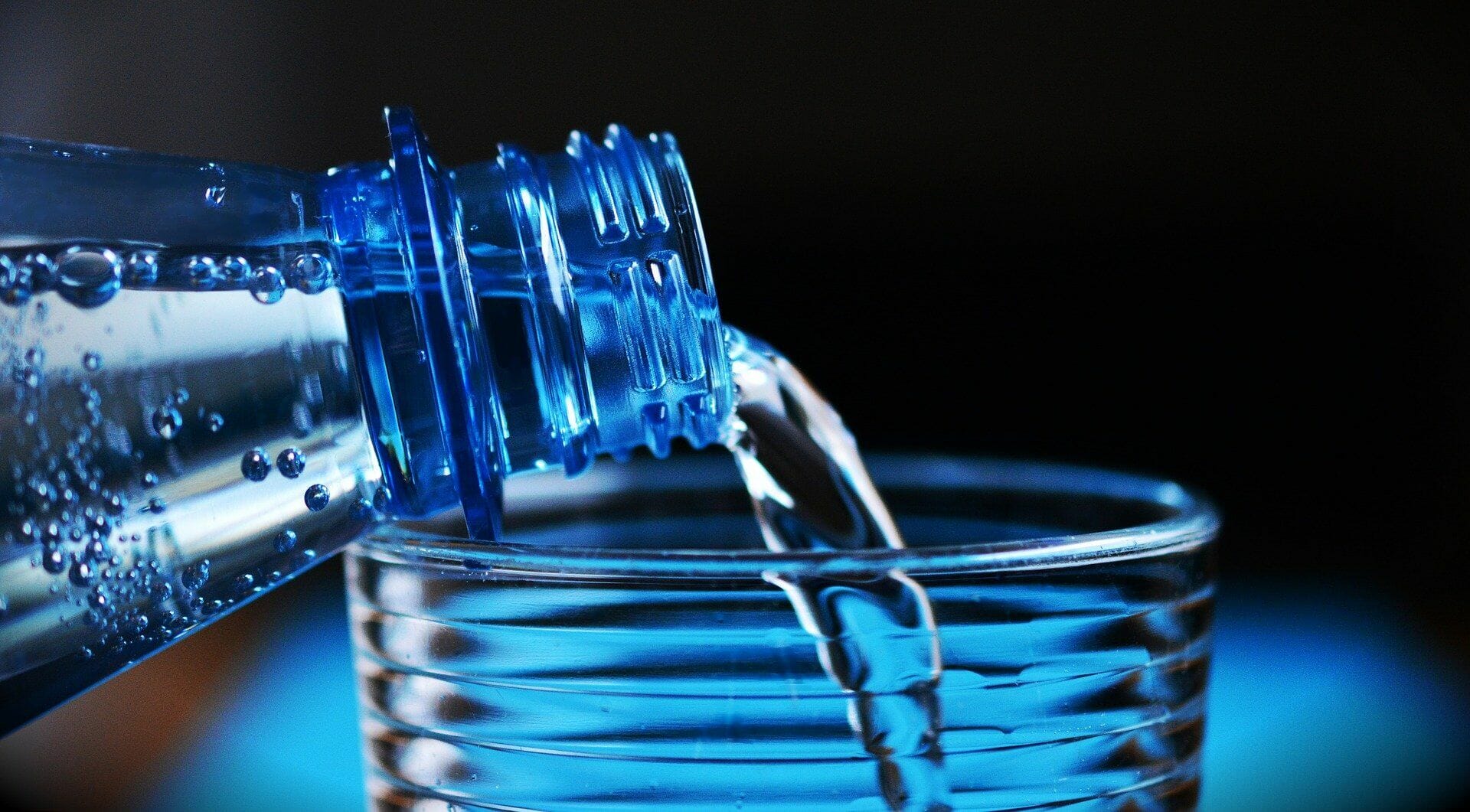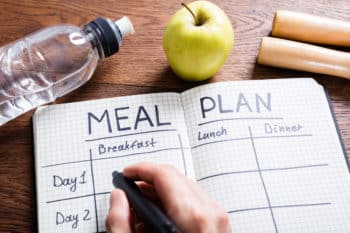Is fiber the best nutrient you can eat? Fiber is a type of carbohydrate that the body uses to stay clean and active. Also, many people call it nature’s broom because it keeps the body’s two superhighways and many vital organs clean. The two superhighways we refer to are the blood vessels (veins, arteries, capillaries) and the digestive tract (small and large intestines). Also, experts state the digestive tract is up to 30 feet, while the vast system of blood vessels is over 60,000 miles long.
The scientific community has also linked dietary fiber to increasing antioxidant and detoxifying enzymes in the liver and reducing your kidneys’ burden of processing nitrogen, which is absorbed by the gut. In addition, new research suggests another potentially significant benefit: high-fiber diets may create a chemical cascade resulting in reduced brain inflammation, which could mean less cognitive decline and memory loss with age, and decreased risk of neurodegenerative diseases. In short, fiber for your body is like an oil change for your car.
While there are many essential nutrients, such as protein, fats, carbohydrates, iron, and calcium, none can do what fiber does. Also, this article intends to prove that fiber is the best nutrient. Thus, we will define fiber, identify the foods that provide it, how much to eat, list the benefits, and show how to use it in your diet.

What is fiber?
As we mentioned earlier, there are two types: soluble and insoluble. Water can break down soluble fiber. Soluble fiber keeps your blood vessel and heart clean. It turns to gel in water. Also, any plant-based food that turns to mush when you eat it provides soluble fiber. We refer to it as the meat of the plant. Finally, as it travels through the body, it scrubs the walls of the blood vessels and organs.
In contrast, water cannot break down insoluble fiber and exits the body intact. Instead, we find it in the plant’s skin. Thus, it makes up the rigid cell walls of vegetables and fruit. So, fruits, vegetables, and grains with eatable skin, flakey, stringy, or leafy, provide you with insoluble fiber. In addition, insoluble fiber scrubs the walls of the intestines.
We refer to soluble fiber as the meat of plant-based foods and insoluble fiber as plant-based foods’ skin and cell walls. Also, the characteristics of fiber inform us why food provides us with both fiber types. For example, some foods, like tomatoes, are more soluble, while others, like celery, are more insoluble. But they both have meat and skin; therefore, they provide soluble and insoluble fiber.
We classify fiber as a carbohydrate, but it cannot be broken down and used for energy like other carbs. Because your body cannot break it down for energy, nutritional fact labels list it as zero calories. Also, it leaves the body in the same condition it entered the body. Because organic fiber comes from plants, eating a solely fat diet or protein is not a great idea.
Some of the most healthy foods we call superfoods provide us with the fiber we need. Thus, the cliche “an apple a day will keep the doctor away” is partly true because of the amount of fiber that an apple provides. Also, fiber is why it is not a good idea to juice all of your fruits and vegetables.
Foods that Provide the Nutrient
You can eat many foods to get the daily recommended portion of the nutrient. The goal should be to select foods you enjoy eating with the most fiber. Since this nutrient is so essential, it’s best to eat as much of it as early and often during the day. Also, we must ensure we get the right mixture of soluble and insoluble because they clean different superhighways. For energy, it doesn’t matter since they both contribute zero calories to your diet. Here is our list of the best-tasting foods that provide the most soluble vs. insoluble:
Insoluble
- Berries – 1 cup; 3.6 grams
- Apples – 1 small; 2.8 grams
- Fiber One Cereal – 1 cup; 10 grams
- Avocado – 1 cup; 10 grams
- Sweet Potatoes – 1/2 cup; 4 grams
- Green beans – 1/2 cup; 2 grams
- Oatmeal – 1/2 cup; 4 grams
Soluble
- Oranges – 1 small orange; 2.9 grams
- Pears – 1/2 large; 2.9 grams
- Mango – 1/2 small; 1.7 grams
- Apricots – 4 whole; 3.5 grams
- Plums – 2 medium; 2.4 grams
- Figs – 1 1/2; 3 grams
Of course, foods such as turnips (1/2 cup; 4.8 grams), okra (1 cup; 3.2 grams), Brussels sprout (1/2 cup; 3.8 grams), kidney beans (1/2 cup; 7.0 grams), Navy beans (1/2 cup; 6.9 grams), black beans (1/2 cup; 6.1 grams), pinto beans (1/2 cup; 6.1 grams), flax seeds (1 tbsp; 3.3 grams), wheat bran (1/2 cup; 12.3 grams), and peas (1/2 cup; 4.3 grams) provide fiber, but the goal of this article was to find foods you will enjoy eating the most.
Therefore, we also provided the total grams of fiber for each food. Also, we categorized foods based on the type of fiber they offered the most. For example, some foods like oatmeal provide equal soluble and insoluble fiber.
How much to eat?
People need to eat a minimum of 25 grams of fiber per day. Women need to eat around 35 grams per day for optimum performance. Also, men need to eat about 48 grams daily for optimum results. A person’s maximum amount of fiber in a day is around 70 grams. Once you exceed this amount, you will experience adverse effects. The average American eats 10 to 15 grams of fiber daily, far below what the USDA recommends.
Listen to your body. Your cholesterol and trips to the restroom will improve when you get enough fiber. Thus, the average person should perform one to two daily bile movements. Good cholesterol levels should range from 200 or less for total cholesterol and 60 or higher for HDL Cholesterol. Also, the health of your heart and cardio fitness should improve once you eat the optimum amount of fiber each day. So by paying attention to your bile movements and cholesterol numbers, you will know if you are getting enough fiber.
While genetics play a role in how your body responds to food, using your baselines from the past can help you determine how well you are doing. Thus, if your restroom trips increase or decrease your past results, use that to benchmark how well you are doing. Do not compare your outcomes to averages or others to get an accurate reading of where you are. Finally, the goal is to get better, not chase a plan that might not be reasonable for you.

What are the benefits of eating the optimum amount of fiber each day?
The nutrient provides many advantages. That we call it nature’s broom should be enough to include it in your diet. But if it is not, we have a list of benefits you can expect to experience once you include the optimum amount of fiber in your diet.
- help to feel full longer
- lower blood lipids and cholesterol
- lower risk of colon cancer
- boost gut health
- improves heart health
- lower risk of brain diseases
- increase metabolism
- decrease enterohepatic recycling of bile acid
- help to excrete sex hormone metabolites
Fiber acts as a natural detox. Thus, it cleans the systems that transport nutrients and waste into and out of the body. Fiber benefits are many, as a clean body is more likely to be healthy and fitter. In addition, blood vessels and the digestive tract impact every body part. So if you are looking for a fresh start and want to start a health and fitness journey through your diet, then fiber is the primary nutrient you should focus on.
How can fiber help burn stomach fat?
Fiber provides the body with zero calories, but the body must use energy to digest and remove fiber from the body. Thus, fiber also feeds the probiotics in your stomach, which helps fight against harmful bacteria and yeast. Also, these processes create a net calorie deficit. The reason the body burns stomach fat is to correct a calorie deficit. So fiber creates a calorie deficit which causes the body to burn stomach fat.
Also, fiber improves the health of the brain, heart, liver, kidneys, and digestive tract. These organs make up over 51% of the body’s metabolism. A healthy metabolism burns more energy at rest and can quickly create a calorie deficit when combined with natural activities. Along with water and resistance starch, fiber is the only nutrient that provides zero calories and a net calorie deficit.

How can fiber help build muscle?
Fiber improves circulation and transports blood, hormones, and nutrients throughout the body. Clean blood vessels improve blood flow, organs, the distribution of nutrients, and the production and regulation of hormones. The probiotics that fiber feed also promote muscle-building hormones, reduce harmful bacteria and yeast, rob the body of energy, and make it difficult to work out and build muscle. In addition, fiber improves the health of organs that produce hormones and process protein and fat.
When you work out muscles, use blood to create a muscle pump and nutrients to give the body the energy to lift more weight. Also, optimum levels of hormones respond more efficiently to a workout. Thus, the blood flow, nutrients, and hormones facilitate the growth of muscles. In short, a clean, healthy body builds larger muscles faster.
How to use fiber in your diet to get the best results?
The most critical part of using fiber in your diet to get the best results is ensuring that the fiber you eat in a day adds up to the optimal amount for you. Therefore, if you are a woman, you need to eat 35 grams of fiber, and a man needs to eat 48 grams daily. The approach we take comes from reaching our optimal amount. Therefore, portion control, taste, and total fiber are things we must consider when selecting our diet.
Portion control helps you to eat enough fiber without overeating
For example, a cup of berries is 3.6 grams of fiber, while a cup of sweet potatoes is 8 grams: same cup but better results with the sweet potatoes. Also, you could eat a 1/2 cup of Fiber One Cereal, which will give you more calories than the 2 cups of berries and sweet potatoes. By choosing a smaller portion and more fiber, you can reach your daily fiber intake faster.

Taste helps you reach your total fiber goals
You never have to motivate someone to eat foods they like. Thus, fruits that taste delicious provide some of the best options. Once dieters get past the fact that the sugar in fruit is healthy, they have no problems staying on a vegetable and fruit diet. So here is a trick question: how much energy do 100 calories of fruit and 100 calories of meat provide you? Hopefully, you said 100 calories.
Planning your meals around fiber helps you reach your total fiber goals
Knowing how much fiber you need each day and planning out ways to eat it is a simple but effective way to reach your total fiber goals.
For example, if you determine you need 40 grams to maintain good cholesterol levels and stay regular (once or twice a day) and if you eat five times a day (breakfast, lunch, dinner, and two snacks), then you could plan for 9 grams at each meal.
But you could mix it up and prepare for 10 grams in your meals and 5 grams in your snacks. How you want to get to the 40 grams is clearly up to you, but always start with the numbers first and then add the foods that help you reach the number.

A meal plan based on fiber
Start with the foods that provide the most fiber first and then work on the ones that provide the least amount you enjoy the most. We are going to stick with 40 grams of fiber a day. We will be bold and go for 10 grams with our meals and 5 grams with the snacks. So here is what a daily meal plan looks like:
Breakfast
- Fiber One Cereal with Honey Clusters; 1 cup; 10 grams; 4 grams of proetin170 calories
- Almond milk; 1 cup; 60 calories
- Turkey sausage patties; 2 patties; 10 grams of protein; 110 calories
- Apple; 1 medium; 2.8 grams; 52 calories
- Totals: 12.8 grams of fiber; 10 grams of protein; 392 Calories
Snack
- Pear; 1 medium; 6 grams; 110 calories
Lunch
- Arnold Health Multigrain Bread; 2 slices; 6 grams; 220 calories
- Oscar Mayer Deli Fresh Oven Roasted Turkey Breast; 2 oz; 9 grams of protein; 50 calories
- Avocado; 1/2 cup; 5 grams; 1.4 grams of protein; 117 calories
- Romaine lettuce; 1 cup; 1 gram; 10 calories
- Orange; 1 medium; 2.9 grams; 80 calories
- Totals: 14.9 grams of fiber; 15 grams of protein; 477 Calories
Snack
- Raspberries; 1 cup; 9 grams; 1 gram of protein; 70 calories
Dinner
- 3 oz skinless chicken breast; 26 grams of protein; 128 calories
- 1/2 cup of kidney beans; 5.5 grams; 7.5 grams of protein; 113 calories
- 1 cup of okra; 3.2 grams; 1.9 grams of protein; 33 calories
- 1 cup of grapes; 1 gram; 62 calories
- Totals: 9.7 grams of fiber; 35 grams of protein; 336 calories
Water Intake
- 12 cups
Total Daily Nutritional Facts
- 52.4 grams of fiber
- 61 grams of protein
- 1355 calories
The meal we put together proves 52 grams of fiber, which exceeds our goal by 12 grams. The more fiber you eat, the more water you must drink. Fruit and vegetables provide a high intake of water. Water makes up about 90% of most fruits and vegetables. Thus, fruits and vegetables are excellent sources of fiber. Also, by decreasing or increasing the portion size, you can increase or reduce fiber, protein, and calories.
The nutritional facts label will tell you that the daily values are based on a 2,000-calorie diet. Therefore, your daily values may be higher or lower depending on your calorie needs. When suggesting serving sizes, most food manufacturers consider the health implications of calories and nutrients. Therefore, you should believe and follow the recommended serving sizes.
The USDA requires food manufacturers to include nutritional facts labels of all prepared foods. Still, you can also google the nutritional facts by entering the query: “food type nutritional facts.” The search will provide a copy of the nutritional facts label under the all or image tab.
An Alternate faster fiber plan without the meals
This approach focuses on the foods that provide the most fiber for a serving size. We then increase the serving size to meet our daily recommended amount to get the fiber. Thus, if a food provides 5 grams of fiber for 1/2 a cup, we double the fiber to 10 grams and double the serving size to 1 cup. Next, we build a meal around them with whatever calories are left in our diet. Not to worry because fiber keeps you full longer and decreases your satiety.
List of Daily Fiber
- Fiber One Cereal with Honey Clusters; 1 1/2 cups; 15 grams; 6 grams of protein 255 calories
- Navy beans 1 cup; 14 grams; 14 grams of protein; 210 calories
- Avocado; 1 cup; 10 grams; 2.8 grams of protein; 234 calories
- Raspberries; 1 cup; 9 grams; 1 gram of protein; 70 calories
- Totals: 48 grams of fiber; 23.8 grams of protein; 769 calories
Eating 1500 calories daily, we have 731 calories remaining for additional proteins, carbs, and fat. The foods we included also provided us with almost 24 grams of protein. So, that gives us some flexibility with protein. The benefit of this approach is how quickly the fiber plan can be put together, which allows us to use this type of plan consistently and to have more time to focus on other things.
What are some fruits and vegetables that are low in fiber?
Low in fiber, some fruits and vegetables include bananas, cantaloupes, honeydew, kiwis, and tomatoes. While these foods may be lower in fiber than other fruits and vegetables, they still offer a variety of nutrients and health benefits. For example, tomatoes are an excellent source of antioxidants, which can help protect your body against free radicals. Likewise, kiwis are a superb source of vitamin C and potassium.
Eating various fruits and vegetables, regardless of fiber content is essential. Also, this is because fresh fruits and vegetables offer different nutrients and health benefits. For example, cruciferous vegetables like broccoli are high in fiber. Citrus fruits are high in vitamin C. By eating various foods; you’re more likely to get the nutrients needed for optimal health.

How can you increase your fiber intake in a healthy but enjoyable way?
If you’re looking for a way to increase your fiber intake, consider adding more high-fiber fruits and vegetables to your diet. Some high-fiber fruits and veggies include artichokes, blackberries, broccoli, green peas, raspberries, watermelon, etc. In addition, if you want to increase your fiber intake on a plant-based diet, you can consider adding some legumes or grains to your meals. For example, swapping out white rice for brown rice or quinoa is a great way to add more fiber to your meals.
You can also try using high-fiber foods in recipes to increase the fiber content of any meal! For example, you can swap out white pasta for whole wheat pasta or spaghetti squash to add more fiber to dishes that typically lack it. You can also use whole grain bread instead of white bread in sandwiches or add chia seeds or flaxseeds to your morning smoothie for a fiber boost.
No matter how you add more fiber to your diet, it’s essential to ensure you’re doing so healthily and satisfactorily. By adding high-fiber foods into your current diet or simply including these foods more frequently, you can manage hunger and promote a healthy digestive and circulatory system.
Here is the last word on why fiber is the most critical nutrient you can eat
Fiber is the most underappreciated nutrient. Research shows that many Americans do not get enough of it. While many of us over-eat protein, fats, and other carbs. Fiber does something that other nutrients cannot do: clean the body. Eating the right amount of fiber improves your health and fitness. What has been your experience with fiber? We would love to hear from you. Share your comments below.




